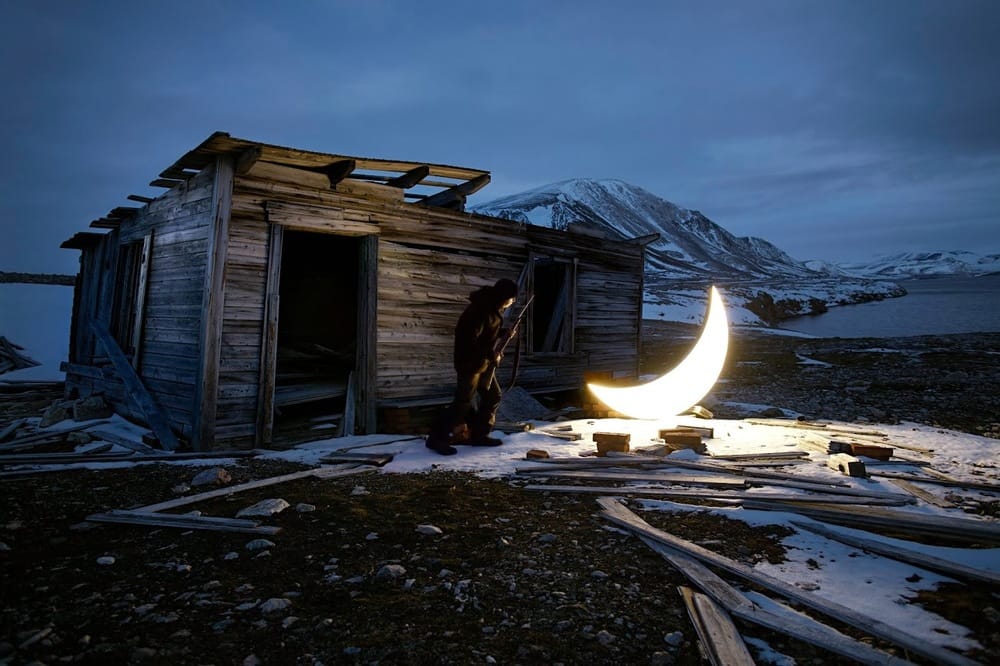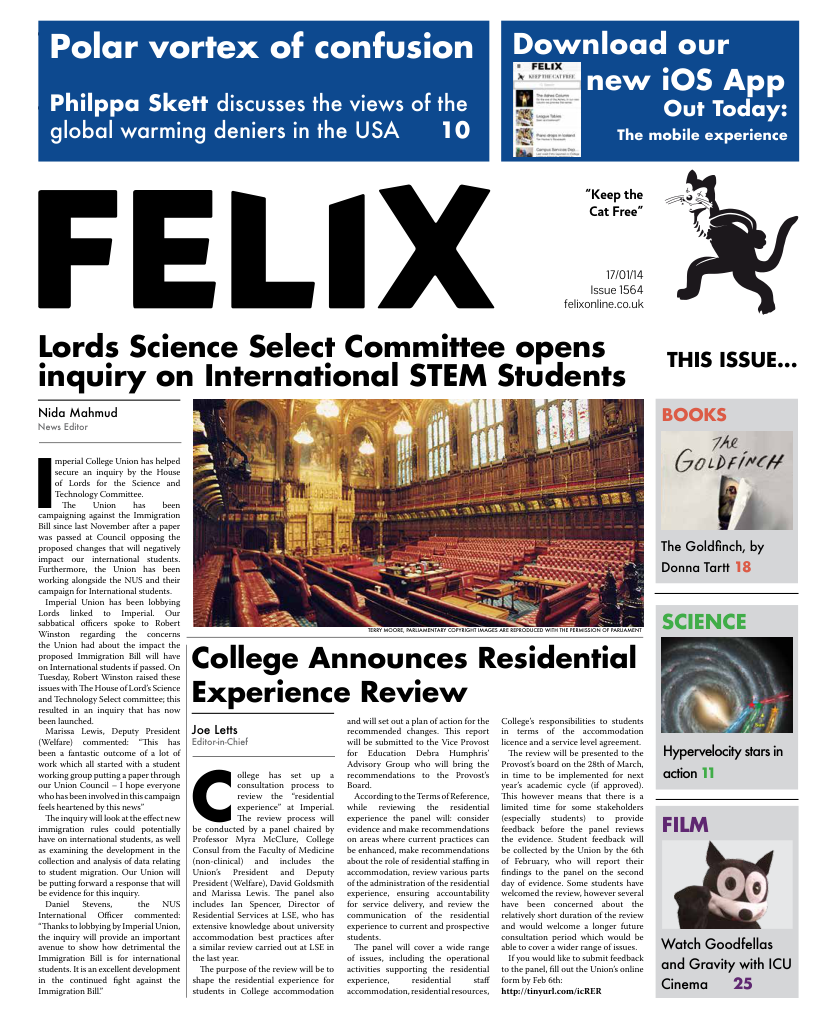Republic of the Moon
Fred Fyles takes a trip to the new Earth-based Lunar Embassy

Since the dawn of humanity, mankind’s relationship with the Moon has been a special one. When our ancestors looked up into the sky, they saw the same heavenly sphere that we see today; unchanging and dynamic, familiar yet distant, the Moon has provided a wealth of inspiration about what it means to be human. For many years now space has been seen as the ‘final frontier’, culminating in the first manned moon landings in 1969. While enthusiasm for lunar exploration seems to have somewhat waned – the last manned landing was over four decades ago – as China and India begin to make their mark on the lunar surface, it seems likely that we will see renewed interest in the coming years. But there is a massive question that hasn’t yet been answered: now that we have finally reached the Moon, what do we do with it?
It is this question that The Arts Catalyst is attempting to answer with their new conceptual exhibition ‘Republic of the Moon’. Bringing together artists whose work resonates with the lunar landscape, The Arts Catalyst has taken over an old bargehouse, which they have declared an Earth-based embassy for their newest republic.
Given the current economic and environmental situation here on terra firma, it seems highly likely that there will be some attempt within this century for international corporations to exploit the natural resources the Moon can provide. While an international treaty was signed in 1979, banning the use of the Moon for exploitative activities, it has never been ratified by the United States government, nor any countries that have launched missions to the Moon. With so little to protect it, it seems somewhat inevitable that a new colonialism will emerge centered on this celestial body.
Astronauts are described as ‘emissaries of humanity’, a label which can surely be used to describe the role that artists play in our society. Therefore it seems to make perfect sense that they are the ones to explore what the Moon means to us.
American artist Liliane Lijn looks back to ancient times for her inspiration, exploring the link between fertility, lunar cycles, and the notion of femininity in her work _moonmeme. _Unrealised as of yet, moonmeme is a complex work in which Lijn, working with scientists and astronomers, plans to project the word SHE across the lunar surface, large enough to be seen on earth. As the Moon wanes the word fades out, becoming HE before disappearing, linking together the male and female, revealing how one is integral to the other. The work is represented by a real time projection of what the word would currently look like on the lunar surface, along with a soundscape created by Lijn, in which she combines mystic quotes about the Moon by thinkers such as Pliny with repetition of the word ‘She’, which has been used for millennia to describe the Moon. Stretching out the word, it begins to lose its meaning, becoming a part of the magic of the lunar cycle. Furthering the idea of the Moon not belonging to any one nationality, Lijn has furthered the project by expanding it to other languages; ‘Elle’ becomes ‘El’, ‘Ona’ becomes ‘On’, and so on.
The beauty and mystery of the Moon has inspired a myriad of artistic works, and Agnes Meyer-Brandis’ work is informed by one of the earliest works of science fiction: Francis Godwin’s The Man in the Moone. Published in the early 17th century, it describes a man who is carried to the lunar surface by a flock of ‘Moon Geese’. In Meyer-Brandis’ piece, Moon Goose Colony, the artist attempts to recreate this absurd journey; raising a flock of geese from birth, she has trained them as ‘astronauts’, and they are now embarking on a habituation mission together, spending a year on a Moon analogue in the Italian countryside. Comprising a short film, in which she documents the project, along with photos of the geese involved and a model lunar habitat, the work is full of whimsy and wonder, reflecting the unique magic of the Moon.
However, Meyer-Brandis also uses the work to raise questions about human impact on the environment; we see her trying to teach the geese about avoiding space debris during their journey, but for many bird species today, migrating to their breeding grounds can become as daunting a challenge as being sent into space.
This theme, of humans and their interactions with earth and space, resounds through the exhibition, which opened last week with a ‘Manifesto Launch’. Artist group _WE COLONISED THE MOON _addresses the problem of space tourism and colonisation head on, organising anti-mining protests throughout the run of the exhibition. While this might seem like a far-fetched concept, it is difficult not to be reminded of the current protests surrounding fracking, which has become a talking point only within the last couple of years; is it really so absurd, considering the inexorable march of technological progress, that the Moon could become the new arctic circle, or oil sands?
This decision about what to do with the Moon is summed up, somewhat pessimistically, in a piece by WE COLONISED THE MOON, who give us the stark choice: ‘Theme Park or Quarry’. But are these really the only two options that we have? Perhaps this exhibition can inspire a different vision of the future.
The idea of colonialism can seem difficult to apply to the Moon, but when we look at historical dominance over the territory it seems hard not to draw parallels. Thus far twelve people have walked on the Moon – all white, American men, they can hardly be described as emissaries of humanity. But this could soon change. The Indian Space Research Organisation was established in 1969, but it was not until recently that the ISRO stepped up their space programme, successfully launching their first lunar probe, Chandrayaan-1, in 2008. Challenging the status quo of space exploration, it today seems more likely than ever that the main challengers for control of the Moon will not be the US and Russia, but India and China. Chandrayaan translates as ‘Moon Vehicle’, which has become the name of a joint project between the ISRO, artist Joanna Griffin, and students at Srishti School of Arts, Bangalore. Essentially and outreach programme for the school, Moon Vehicle shows how the prospect of space exploration can inspire an entire generation of young people.
Katie Paterson’s work, while directly inspired by the Moon, is unique in that it focuses on what is missing as opposed to what is actually there. In her first piece, Second Moon, a piece of lunar rock is being sent by courier around the world, at twice the speed of the real Moon. We can track this artificial moon as it makes its man-made orbit through an app (when I visited it was somewhere in Eastern China); as it passes through cities it will be exhibited at art galleries, before making its triumphant return to the Republic’s Embassy.
While the work delightfully subverts the idea of a human satellite, it seems rather high-concept, and pales in comparison to her second work _Earth-Moon-Earth, _which makes use of ‘moon bounce’ technology. Paterson has converted Beethoven’s Moonlight Sonata into morse code, before transmitting it at the Moon; the notes are reflected back to the earth, but parts of the information is lost in the craters of the lunar surface. Lacking part of the information, we are left with a piece that resembles the original, but is peppered with gaps. As the automatic piano plays the piece, these discordant pauses create a tense, melancholic atmosphere in the exhibition space.
If one criticism could be levelled at the works exhibited thus far, it would be that they are all very high-concept, and removed from the individual relationship we have with the Moon. Luckily we have work from photographer Leonid Tishkov’s series Private Moon. Tishkov represents the highly personal link each person has with the Moon by carrying around a luminous crescent with him. In a series of candid shots we see him taking his moon sailing, sleeping next to it, and showing it the Moscow skyline. It is difficult to understate the sheer beauty of these pictures; beautifully lit, and technically accomplished, they manage to make the Moon a tangible presence, rather than a distant rock in the sky. These pictures form the highlight of an exhibition that is brimming with excellent pieces, creating a mood that is both sombre and intimate.
Artists provide us with a unique outlook on life, and, as mankind seems poised to erupt from this crowded earth to reach for the stars, their voices become increasingly important. Thus far the Moon is viewed through the prism of our current Earth-based technology; such a seismic shift in human migration requires a completely new way of thinking, one that scientists have – as of yet – been unable to provide. We can see this attitude in the US space programme, whose spacecrafts are given names such as Pioneer and Prospector, indicating that the Moon is just another frontier for the US to conquer - an out-dated concept when one considers the stratospheric rise of India and China. It is exhibitions such as these, in which scientists, engineers, and artist work together, that give us a more suitable context in which to place space travel. When I leave the exhibition, I find that the cloudy sky when I arrived has been transformed into a clear winter’s night; staring up into the sky, I can see the brilliant waxing Moon staring straight back. It may be thousands of kilometers away but – for tonight at least – it has never seemed closer.
The Republic of the Moon is on display in Oxo Tower bargehouse, Southbank, SE1, from 10th January to 2nd February 2014. Entrance free.







